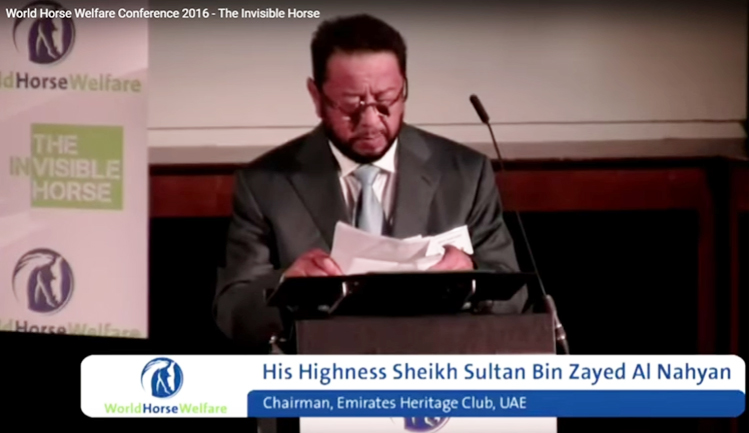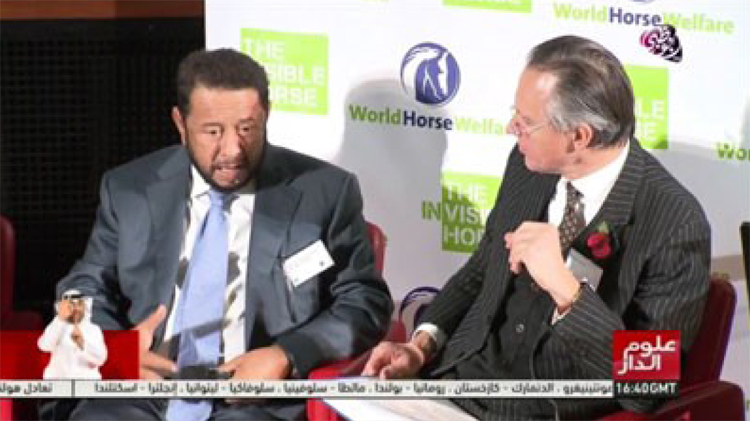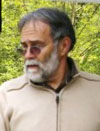BOUTHIB CONTINUES ITS COURSE WITH IMPROVEMENTS FOR THE NEW SEASON
The arrival and start portico was entirely rebuilt in concrete. It is now used for the starts as before but also now for the arrivals including the final ones for better control. The former finish line 90 m wide was truly out of scale. The finishers, coming in small groups or alone were a bit lost on it and this was contrary to the initial intent. The rest areas were enlarged by more than 30% to create more space and comfort for the horses. New deterrent cameras were also added.
NATURAL TRAILS "The course should include naturally occurring or manmade features such as (but not exclusive to) tracks, ditches, steep climbs, descents and water crossings that implements technically challenging factors including but not limited to: footing, terrain, altitude, direction and speed (art 801.2)". We are far from the compacted "hippodrome like" trails travelled by uninterrupted gallops. The traditional profiled and compacted "highway like" trails of the region are now replaced in Bouthib by around 1/3 of new natural terrain trails. This is only a beginning because it is a lengthy and complex work. The aim sought is to diversify by increasing the share of natural trails as, for instance, one can find in the middle of the desert in Wadi Rum (Jordan) near the border with Saudi Arabia. This means a complete recasting of the trail network and cannot be done rapidly, because it has to be planned with a spirit widely different from the one at the origin of the existing trails. The new network has to be coherent with the former one too.
The results of this first CEI ever run on the new trails seem to confirm the expected lowered speed Each year the competitions schedule follows the same diagram. Thus comparing one season to another one becomes possible since the conditions are equivalent. One can easily note the speed of the winners on the November CEI 1*: 26.220 km/h in 2011, 26.208 km/h in 2012, 23.483 km/h in 2013, 25.509 km/h in 2014. In 2015, with a warning to the competitors, but still before enforcing the Bouthib Protocol, the speed started to slow down to 23.031 km/h. For the first ride of the 2016/17 season, the system being fully enforced and around 1/3 of the full competition run on the new trails, the winner's speed was 19.247 km/h. It is certainly too early to draw definitive conclusions on the influence of the natural trails, but it is clear that the new sections forbid the competitors from gallopping at length as they can do on the old trails. As the season progresses, it will become possible to measure more precisely the actual impact of the creation of technical tracks truly in line with the sport of endurance. We know for sure that it is beneficial for the quality of the competition because of the unavoidable resulting reduction of the speed that it creates. From now on the riders have to evaluate the path they are going to choose, the gait they have to adopt, the footing according to the terrain and directions, etc. A true revolution for those who only know the "old" tracks they have been running on for years at the rhythm of an incessant gallop with no stop whatsoever, crew cars following them constantly for a continuous handing of water bottles for never stopping or slowing down horses. CREW CARS TAKEN AWAY FROM THE TRAILS This innovation (for the area) modifies the behavior of everyone. The trainers and the crews have to be content with seeing their competitors from afar. The latter are not permanently "remotely guided". They have to pay attention by themselves to the changes of directions, slopes, obstacles and optimum trajectory. They have to manage their own competition. Not having fully understood the new rules enforced on this first CEI of a new kind, a few teams intended to reach the new trails with their cars in spite of the interdiction clearly stated. The police as well as the officials kindly reminded them of the interdiction and asked them to respect the instructions. Considering that this was new, no competitor was disqualified, but this kind of behavior will cause disqualifications during the next competitions to come.
WATER POINTS STRICTLY RESPECTED Water buckets having been placed there but we noted that inviting the horses to drink while watering them is not yet part of the habits, except very exceptionally. It is still too early to be "re-established". Nonetheless the creation of enforced water points killed the craziness which consisted in thinking that the smallest stop was a crippling waste of time. From now on in Bouthib, it is a normal behavior to stop one's horse for watering. It is a tremendous improvement because it shows that the horses' welfare is no longer sacrificed to the sole and obsessive race against the clock.
One can note that the crews carelessly throw the empty bottles on the ground. But one also has to note that the Organizing Committee employs an armada of bottle collectors who now leaves the water points in a state of complete cleanliness. Seen from afar, this could be misunderstood since one could imagine that it is simpler to force the crews to collect their own trash than hiring other people to do so. This would be forgetting that, doing so, the Organizing Committee creates jobs, which is also one of the aims. This simultaneous act of cleaning was possible because now bottles are not anymore thrown away along the full course of the rides, but only at the water points. This new provision also contributes to the safeguarding of camels which have an unfortunate tendency to chew plastics, or even to swallow them and possibly die of it. In the past, it was only the following day or two days later that trucks traveled the entire trail for a late pick-up, indeed sometimes too late for some camels.
THE BOUTHIB PROTOCOL: AN EVOLUTIVE SYSTEM The analysis of the season revealed the strong and weak points of the system. This boosted the promotors to have it modified to make it simpler for a better understanding and also more efficiency in terms of education and the horses' welfare. Thus the new rules are easier to understand and clearer but they do not stray from the spirit of the former ones. They will be enforced during the coming rides at the beginning of January 2017. They will help to regulate the competitions in a better way and make them more easily adoptable in other countries which are strongly interested in what's taking place in Bouthib. We have even noted that in the 2017 FEI Endurance Rulebook a new article appeared (art 820.14) which is motivated by the specific protocol signed between the FEI (Fédération Equestre Internationale) and the UAE-NF (EEF) during the past season. This tends to show that the FEI takes a strong interest in what is experimented in Bouthib, the sole place on Earth where, beyond meetings and speeches, successful actions modifying behaviors for the improvement of the welfare of horses are effectively taken. IMAGE SPREADING AND VISIBILITY. His speech was followed by a long discussion / interview. This came also with a private breakfast gathering HRH Princess Royal Ann (WHW President) and HH Sh Sultan with also the participation of Manuel Bandeira, FEI Head of the Endurance and Driving Departments, and Göran Åkerström, Head of the FEI Veterinary Department.
This has at the same time allowed the Bouthib approach to emerge from the framework of the sole "little world" of endurance endowing it with a general and more public dimension, which can only be beneficial to a discipline which, although second most popular discipline of the FEI, remains relatively confidential when compared to the Jumping Competitions (CSO). The season now starting in Bouthib will show and prove to those who are still doubtful that the Bouthib approach is not an experience without continuity or consequences.
|
Enduroonline.com.br
- © Copyright 2008 - Todos os direitos reservados. |

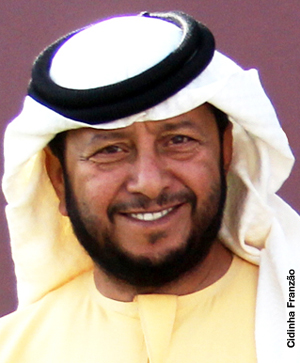
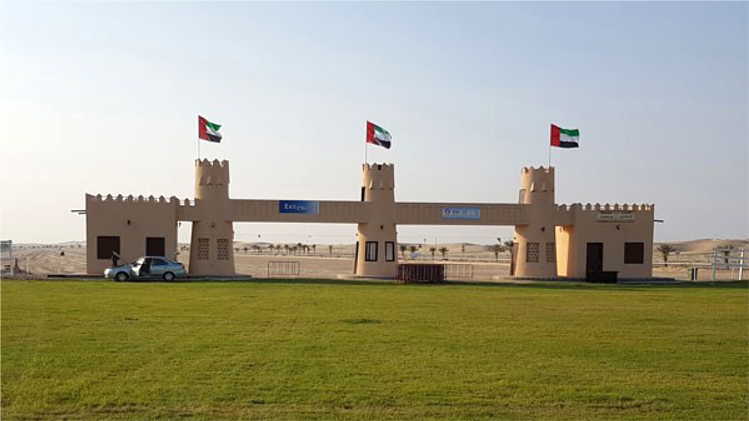
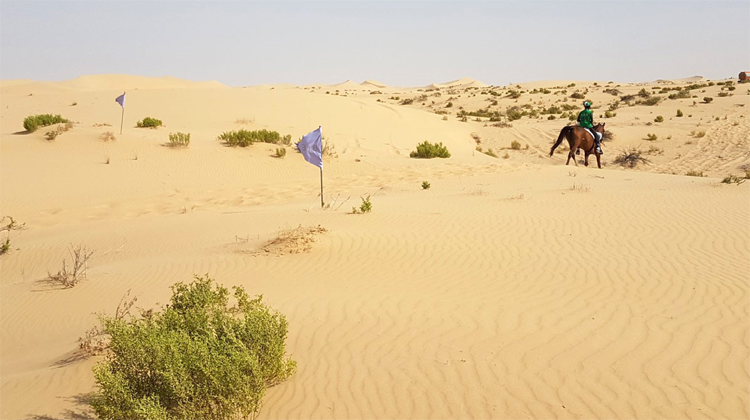
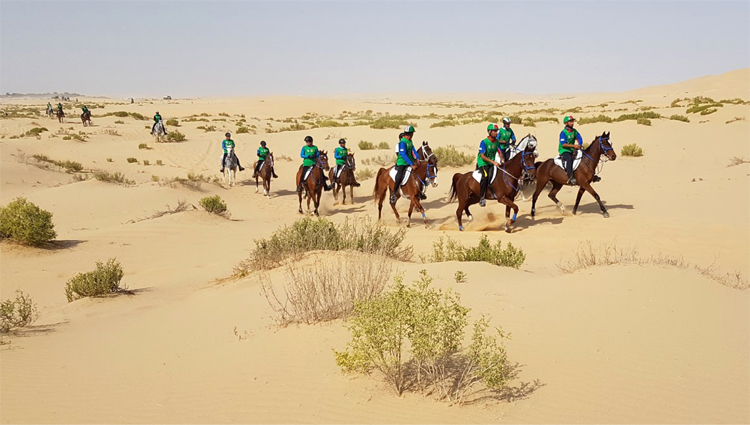
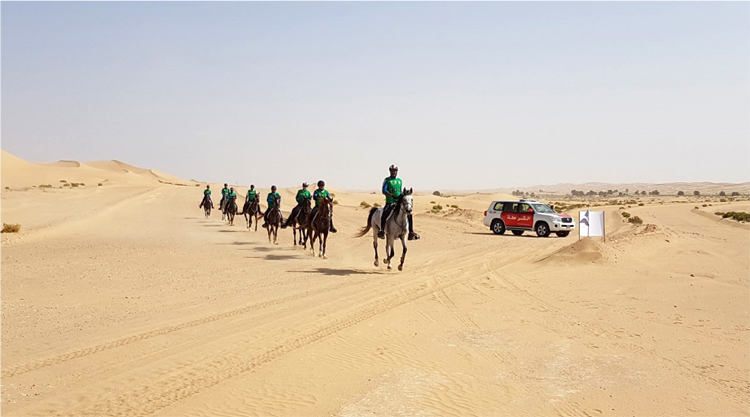
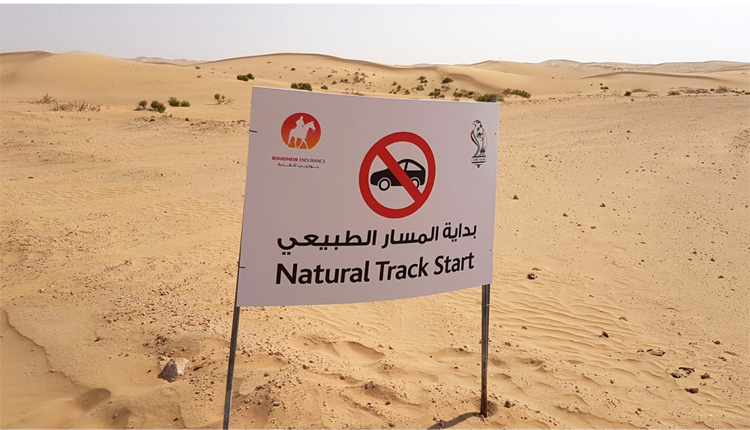
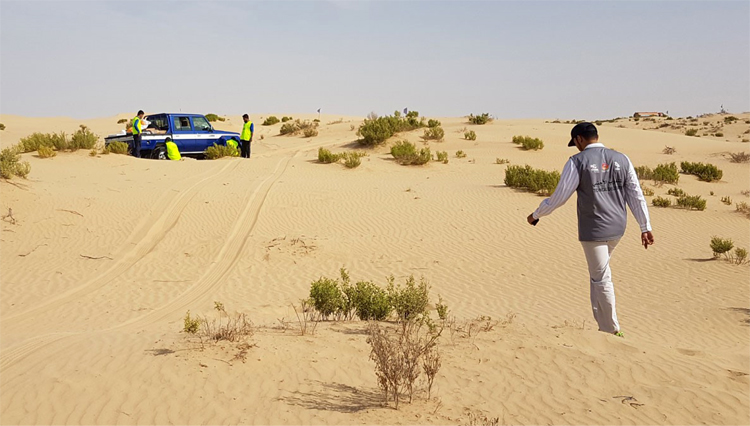
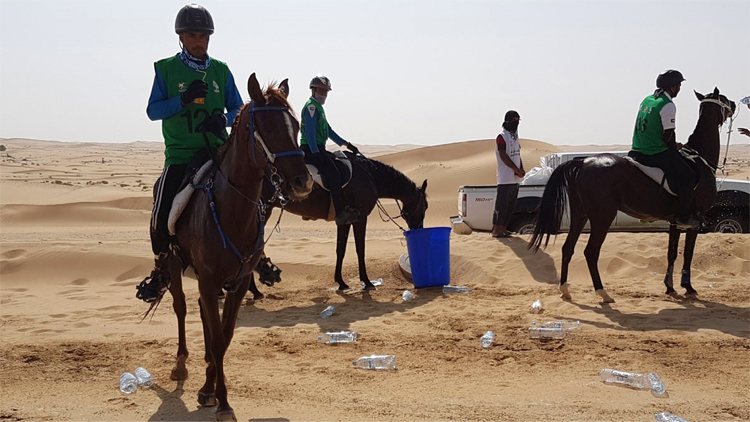
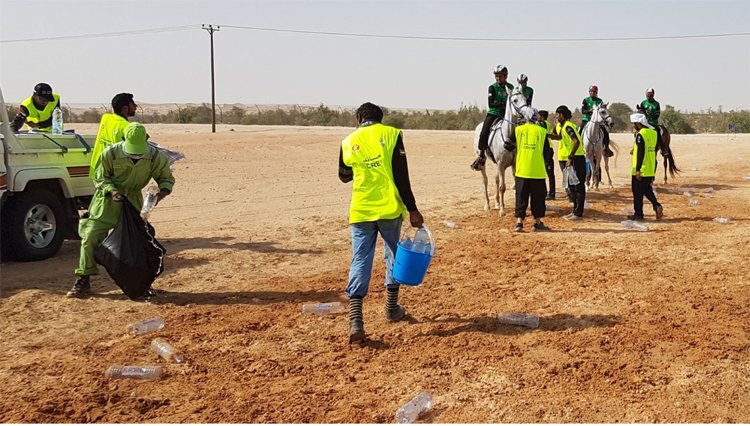 Simultaneous picking up of empty bottles thrown away by the crews at a water point (which is also a good disposition for the safeguarding of camels)
Simultaneous picking up of empty bottles thrown away by the crews at a water point (which is also a good disposition for the safeguarding of camels)